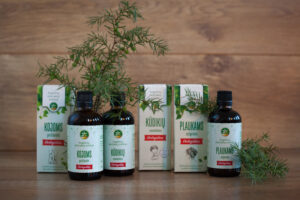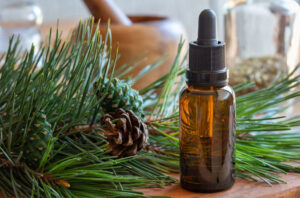Perhaps calendulas are not very beautiful, yet every garden should have an honorary and spacious patch for this flower. Calendula is both a medicinal and a decorative plant. Dried calendula is yellowish orange, fragrant and slightly bitter.
People knew its healing properties already back in the 12th c. It remains a valuable treatment for all kinds of ailments to this day. Calendula stimulates and strengthens immune system.
Its blossoms contain about 3 % of carotenoids (carotene, lycopene, violaxanthin, rubixanthin, flavochrome, etc.), about 3.4 % resin, 4 % mucus, 6-8 % apple acid, a small amount of salicylic acid, 0.02 % essential oils, calendin (bitter substance) and ferments. The parts of the plant above the ground contain saponins, roots — inulin, while seeds — fats and alkaloids.
People also have been using calendula for cosmetics. Calendula stimulates collagen production in skin, reduces inflammations and pain, thus becoming a popular ingredient of cosmetic and medicinal creams. Calendula creams are great for treating chilblains and frostbites.
Calendula oil (calendula phytol) can be made by adding 1 g of calendula blossoms into a half a glass of olive oil and leaving it to settle for 20-25 days. Calendula oil should be kept in dark and cool place. It can be used to treat burns, frostbites, chilblains or pimples.
Useful advice on the use of calendula
Calendula tea is used for lotions and creams. At home you can make calendula tea, extract and cream.
Calendula extract minimises pores, reduces sebum, making it perfect for oily and acne-troubled faces, oily scalps, or as a dandruff and hair loss remedy.
Calendulacalendula extract
Add two tablespoons of dried calendula blossoms to a glass (200 ml) of vodka. Wait 10 days, filter and keep in a tight dark glass vessel. Dilute with water before use — 1 teaspoon of the extract to 1 glass of water.
This extract can be used for cleaning oily skin, minimising pores and blackheads.
Packs for oily acne-troubled skin
Fold gauze bandage several times, moisten with marigold extract (1 spoon of the extract for half a glass of water) and put it on a clean face (cleansed with lotion or soap and water). Keep 15-20 min. In cases of extremely oily skin, use a stronger solution, i.e. equal parts of the extract and water. Dry the face using a dry cotton swab.
Literature
Butkus, V., et. al. Mažieji miško turtai. Vilnius: Mokslas 1987.
Čekauskaitė, L. Gamtos vaistinėlė. Kaunas: Spindulys, 2003.
Kaunienė, V.; Kaunas, E. Vaistingieji augalai. Žinynas. Kaunas: Varpas, 1991.
Obelevičius, K; Petkevičiūtė, S; E. Šeinauskienė, E. Prieskoninių augalų ir jų vartojimo žinynas. Kaunas: Lututė, 2011.
Ragažinskienė, O.; Rimkienė, S.; Sasnauskas, V. Vaistinių augalų enciklopedija. Kaunas: Lututė, 2005.





